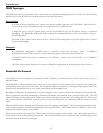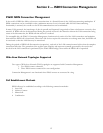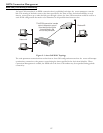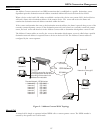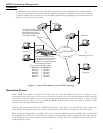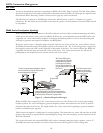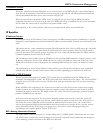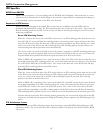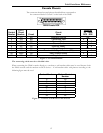
ISDN Connection Management
26
Idle Timer
In order to determine the criteria for suspending an ISDN call, an Idle Timer is defined. The Idle Timer defines
the period of time that LAN traffic is monitored to determine when the ISDN call will be put in suspension and
disconnected. When Interesting Traffic is observed once again, the call is reconnected.
The Idle Timer is common to all ISDN calls and may be defined from 6 seconds to 5 minutes in 1 second
increments. The Idle Timer may be disabled so that only the partner router determines when the ISDN call will
be suspended.
P2600 Session Participation (Spoofing)
While an ISDN call is up and connected, all traffic within the sessions will be considered interesting and will be
transferred to the partner router across the ISDN call. When the router determines that the ISDN call is to be
suspended, the router will consider keepalive and routing information packets to now be non-interesting and
will begin to generate and respond to keepalive and RIP packets.
When the router receives a keepalive packet from the LAN for one of the sessions, the router will not activate
the ISDN call and will not pass the keepalive packet to the remote LAN. The router will generate a response to
the keepalive packet and send it to the originator of the packet. In this way, the router will keep the ISDN call
suspended and will also keep the local side of the session active. The router at the remote site will also be
participating in the keepalive process with the remote side of the session.
Figure 2 - 4 Session Keepalive Messages
While an ISDN call is suspended, if the router observes that one of the devices in the session stops sending
keepalive packets, the router will begin to generate keepalive packets and send them to the device in order to
determine the status of the device. The length of time the router waits before beginning to generate keepalive
packets is definable by the operator.
P2600 routers incorporate a settling time for routing updates. This means that an router will wait after an initial
change in the network is reported before transmitting that change on to the remaining routers connected on the
Wide Area Network.
The router will resume the suspended ISDN call in order to transmit routing messages to partner routers. If
the ISDN call cannot be resumed, or has been closed, the routes will be aged out of the routing table.
This Router will receive the keepalive
frames destined for the Client and generate
a response back to the Server on behalf of the
Client while the ISDN call is suspended.
The Server generates keepalive frames
which are to be sent to the Client and
acknowledged by the Client.
The Client receives the
keepalive frames and
sends an acknowledge
back to the Server.
While the ISDN call is
suspended, this Router
will generate keepalive
frames and send them
to the Client and wait for
an acknowledement from
the Client.
Client
Server
Suspended



